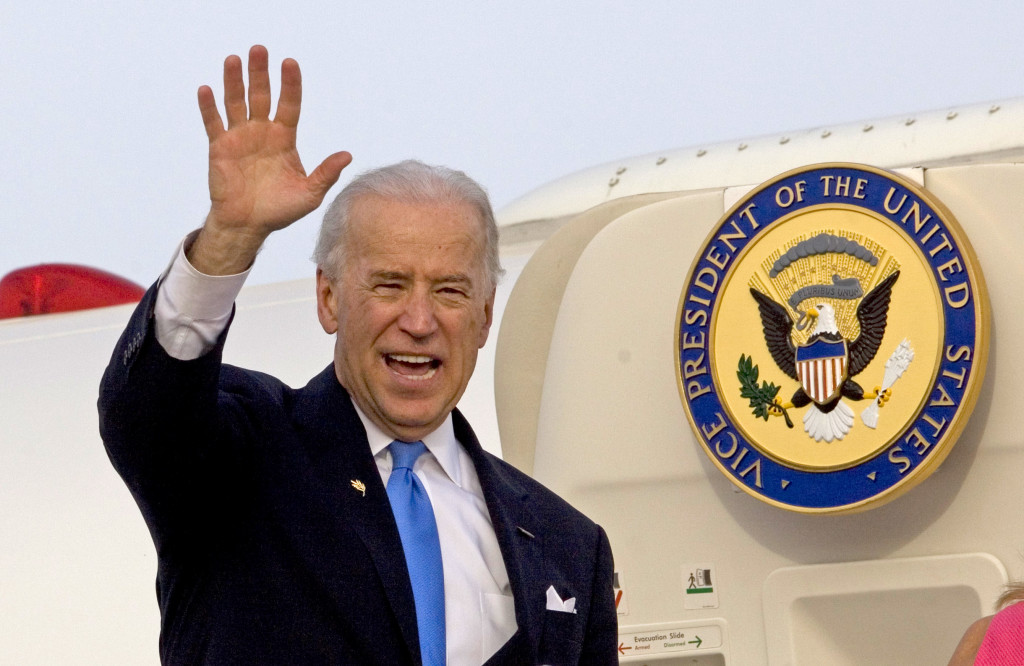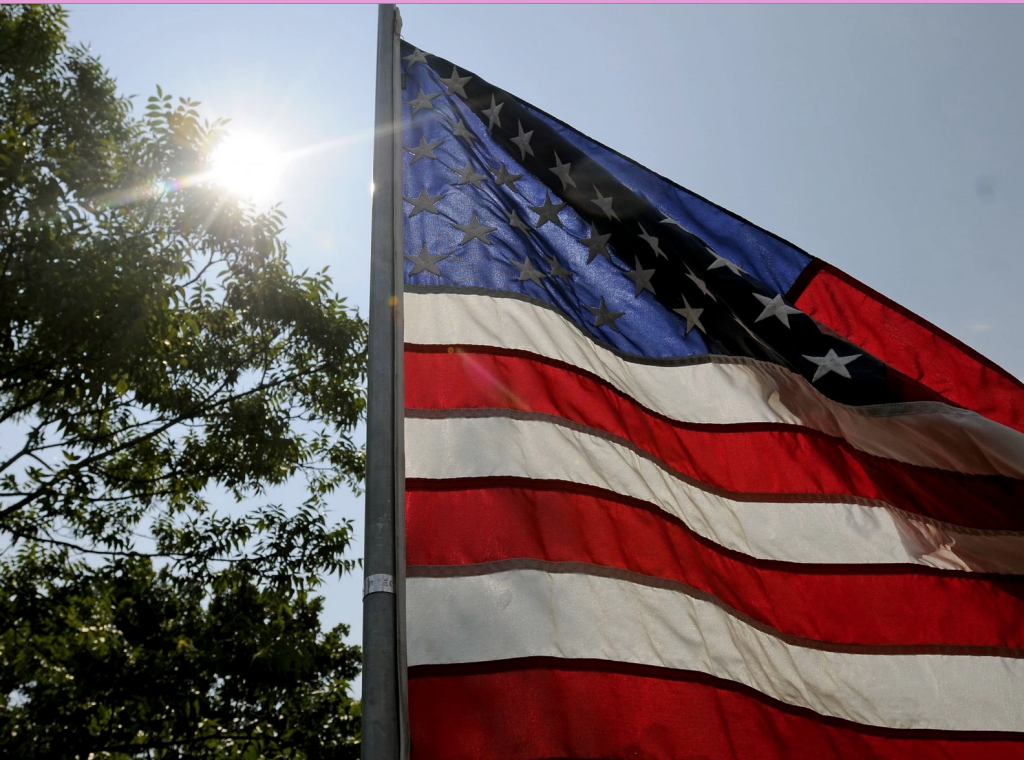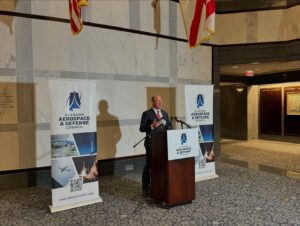Supreme Court upholds ‘soft money’ limits; Gorsuch, Thomas disagree

The Supreme Court is upholding federal limits on political parties’ use of so-called soft money for federal elections. A three-judge court in Washington, D.C., had earlier upheld the restrictions in a challenge brought by Louisiana Republicans. Political parties may only use money they raise through the federal system for elections for Congress and president. This money often is called hard money because it is raised under rules limiting the size of contributions and requiring disclosure of its source. Justice Neil Gorsuch joined Justice Clarence Thomas in calling for the Supreme Court to consider striking down limits on how political parties spend money. Gorsuch and Thomas said they would have set the case for argument. They did not otherwise comment. Republished with permission of The Associated Press.
Supreme Court strikes down Texas abortion clinic regulations

The Supreme Court struck down Texas’ widely replicated regulation of abortion clinics Monday in the court’s biggest abortion case in nearly a quarter century. The justices voted 5-3 in favor of Texas clinics that had argued the regulations were only a veiled attempt to make it harder for women to get abortions in the nation’s second-most populous state. Justice Stephen Breyer‘s majority opinion for the court held that the regulations are medically unnecessary and unconstitutionally limit a woman’s right to an abortion. Texas had argued that its 2013 law and subsequent regulations were needed to protect women’s health. The rules required doctors who perform abortions to have admitting privileges at nearby hospitals and forced clinics to meet hospital-like standards for outpatient surgery. Breyer wrote that “the surgical-center requirement, like the admitting privileges requirement, provides few, if any, health benefits for women, poses a substantial obstacle to women seeking abortions and constitutes an ‘undue burden’ on their constitutional right to do so.” Justices Anthony Kennedy, Ruth Bader Ginsburg, Sonia Sotomayor and Elena Kagan joined Breyer. Ginsburg wrote a short opinion noting that laws like Texas’ “that do little or nothing for health, but rather strew impediments to abortion, cannot survive judicial inspection” under the court’s earlier abortion-rights decisions. She pointed specifically to Roe v. Wade in 1973 and Planned Parenthood v. Casey in 1992. Chief Justice John Roberts and Justices Samuel Alito and Clarence Thomas dissented. Thomas wrote that the decision “exemplifies the court’s troubling tendency ‘to bend the rules when any effort to limit abortion, or even to speak in opposition to abortion, is at issue.’” Thomas was quoting an earlier abortion dissent from Justice Antonin Scalia, who died in February. Scalia has not yet been replaced, so only eight justices voted. Alito, reading a summary of his dissent in court, said the clinics should have lost on technical, procedural grounds. Alito said the court was adopting a rule of, “If at first you don’t succeed, sue, sue again.” Abortion providers said the rules would have cut the number of abortion clinics in Texas by three-fourths if they had been allowed to take full effect. When then-Gov. Rick Perry signed the law in 2013, there were about 40 clinics throughout the state. That number dropped to under 20 and would have been cut in half again if the law had taken full effect, the clinics said. Texas Attorney General Ken Paxton said the law “was an effort to improve minimum safety standards and ensure capable care for Texas women. It’s exceedingly unfortunate that the court has taken the ability to protect women’s health out of the hands of Texas citizens and their duly elected representatives.” Nancy Northup, president of the Center for Reproductive Rights, which represented the clinics, said, “The Supreme Court sent a loud and clear message that politicians cannot use deceptive means to shut down abortion clinics.” Democratic presidential candidate Hillary Clinton called the decision “a victory for women in Texas and across America.” Texas is among 10 states with similar admitting-privileges requirements, according to the Center for Reproductive Rights. The requirement is in effect in most of Texas, Missouri, North Dakota and Tennessee. It is on hold in Alabama, Kansas, Louisiana, Mississippi, Oklahoma and Wisconsin. The hospital-like outpatient surgery standards are in place in Michigan, Missouri, Pennsylvania and Virginia, and it is blocked in Tennessee and Texas, according to the center. Texas passed a broad bill imposing several abortion restrictions in 2013. Texas clinics sued immediately to block it, contending it impermissibly interfered with a woman’s constitutional right to an abortion. The clinics won several favorable rulings in a federal district court in Texas. But each time, the New Orleans-based 5th U.S. Circuit Court of Appeals sided with the state, at first allowing challenged provisions to take effect and then upholding the law with only slight exceptions. The Supreme Court had allowed the admitting-privileges requirement to take effect in most of the state, but put the surgical center provision on hold pending the court’s resolution of the case. The justices split largely along liberal-conservative lines in their emergency orders, with the court’s conservative justices voting repeatedly to let the law be enforced. Separate lawsuits are pending over admitting-privileges laws in Louisiana and Mississippi, the other states covered by the 5th circuit. The laws are on hold in both states, and a panel of federal appellate judges has concluded the Mississippi law probably is unconstitutional because it would force the only abortion clinic in the state to close. A separate appeal is pending at the Supreme Court from Wisconsin, where federal judges have struck down that state’s admitting-privileges law. Republished with permission of The Associated Press.
Darryl Paulson: Donald Trump goes a-courting

On May 18, 2016, Republican presidential nominee Donald Trump released a list of 11 judges that he would “most likely” use to select his appointees to the Supreme Court. The list of 11 names included 11 whites and eight males. Six of the 11 were appointees of George W. Bush, and the other five are currently serving on their states’ supreme court. The average age of the potential nominees is 50, compared to the average age of 68.75 on the current court. The youngest nominee is David Stras of the Minnesota Supreme Court. Stras, if nominated, would be the youngest candidate put forward for the court since the FDR administration. The response to Trump’s list of potential nominees was as expected. On the political left, Nan Aron of the Alliance for Justice Action Campaign, said the nominees “reflect a radical-right ideology that threatens fundamental rights.” Ilyse Hogue, president of NARAL Pro-Choice America, called the list “a woman’s nightmare,” and said the judges would overturn Roe vs. Wade. Conservative attorney John Woo praised Trump for starting to unify the party. “Everyone on the list,” noted Woo, “is an outstanding legal scholar.” Woo called the selections a Federal Society all-star list of conservative jurisprudence.” Carrie Severino of the Judicial Crisis Network, said the nominees have “a record of putting the law and Constitution ahead of their political preferences.” The Trump campaign said the list was “compiled, first and foremost, based on constitutional principles, with input from highly respected conservatives and Republican Party leadership.” The following is a quick summary of Trump’s potential nominees to the Supreme Court: Stephen Colloton: Member of the Court of Appeals 8th Circuit since 2003. Clerked for Chief Justice William Rehnquist. Allison Eid: Colorado Supreme Court justice since her 2006 appointment by Republican Governor Bill Owens. Clerked for Clarence Thomas. Raymond Gruender: Appointed to Court of Appeals for 8th Circuit by George W. Bush in 2004. On the Heritage Foundation list of possible conservative appointees to the Supreme Court. Thomas Hardiman: On the Court of Appeals for 3rd Circuit since 2007. Appointed by George W. Bush and unanimously confirmed. Clerked for Antonin Scalia. Raymond Kethledge: On the Court of Appeals for 6th Circuit since appointed by George W. Bush in 2008. Clerked for Justice Anthony Kennedy. Joan Larson: Appointed to Michigan Supreme Court in 2015 by Republican Governor Rick Snyder. Clerked for Scalia. Thomas Lee: Associate Justice on Utah Supreme Court since 2010. Brother of Utah U.S. Sen. Mike Lee, a Trump critic, and backer of Ted Cruz. William Pryor: On Circuit Court of Appeals for 11th Circuit since 2004. On Heritage Foundation list of conservative appointees to the Supreme Court. David Stras: On the Minnesota Supreme Court since 2010. Appointed by Republican Governor Tim Pawlenty. Clerked for Clarence Thomas. Diane Sykes: On Circuit Court of Appeals for 7th Circuit since 2004. Previously on the Wisconsin Supreme Court. Ex-wife of conservative radio host Charlie Sykes, who was an outspoken critic of Trump during the campaign. Don Willett: Appointed to Texas Supreme Court by Republican Governor Rick Perry in 2005. Willett was a frequent Twitter critic of Trump during the campaign. Among his Tweets: Can’t wait till Trump rips his face Mission Impossible-style & reveals a laughing Ruth Bader Ginsburg (Aug. 27, 2015). Low-energy Trump University has never made it to #MarchMadness. Or even the #NIT. Sad! (March 15, 2016). We’ll rebuild the Death Star. It’ll be amazing, believe me. And the rebels will pay for it (April 8, 2016). Whenever lists are announced, there is an interest in both who is on the list and who has been left off. Missing from Trump’s list of possible court nominees are Judge Brett Kavanaugh of the DC Circuit Court and former Bush Administration Solicitor General Paul Clement. Both Kavanaugh and Clement appear on most lists of conservative court nominees. It is unusual to put out such a list before assuming office. Why would Trump put out such a lengthy list at this time? First, it is an attempt to solidify support among the Republican base, in particular among those who are skeptical of Trump’s conservative credentials. Second, Trump may be trying to show he is open-minded by selecting several individuals who clearly were not Trump supporters during the campaign. Finally, several of Trump’s nominees come from battleground states such as Colorado, Minnesota, Michigan and Texas that Trump needs to win if he hopes to get elected. Although many conservatives and Republicans were pleasantly surprised by the names on Trump’s list, some are still skeptical. Conservative writer Charles Krauthammer noted that Trump said that nominations “would most likely be from the list.” “Most likely” leaves too much wiggle room for many of Trump’s critics, who note he has flip-flopped on many issues during the campaign and, sometimes, on the same day. ___ Darryl Paulson is professor emeritus of government at USF St. Petersburg.
Bookended by tragedy, Joe Biden’s storied career nears the end

Joe Biden‘s storied political career will come to an end much the way it started nearly half a century ago: shaped by crushing personal tragedy that shook his deep-seated confidence in his own ability to lead. In deciding not to run for president, Biden turned away from months of intensive preparations and countless hours that had put him on the verge of a third presidential campaign, with almost everything ready to go except the candidate himself. “Unfortunately, I believe we’re out of time — the time necessary to mount a winning campaign,” Biden said, flanked by his wife and President Barack Obama in an extraordinary appearance in the Rose Garden. Biden’s world ground to a halt in May when his son died of brain cancer. For the vice president, 46-year-old Beau Biden‘s death ended any possibility that the popular former Delaware attorney general would carry on his father’s legacy, perhaps with a presidential campaign of his own. Even months later, when Biden began anew to seriously consider running, he steadfastly refused to be rushed, and said the decision hinged on whether he and his family had the emotional mettle to campaign while still roiled by grief. In fact, Biden had predicted his denouement in September, when he said he might not be ready to make a decision before the realities of the campaign calendar would make the decision for him. “If that’s it, that’s it,” he said. Biden, who will turn 73 next month, will probably never again appear on a ballot. So his decision to forego another run for the White House sets him on a glide path toward the end of his long turn on the national political stage, which began in 1972 and will culminate when the Obama administration ends in early 2017. Although Biden hasn’t said exactly what he’ll do after leaving the White House, he has told friends he has no plans to retire in a traditional sense. He’s previously discussed starting a foundation, launching an institute at the University of Delaware or becoming a special envoy if called upon by future administrations, said several friends and aides, who requested anonymity to disclose private conversations. And under a picturesque blue sky in the Rose Garden, Biden hinted at another venture in his future: a “moonshot” to cure cancer, sparing other families the profound loss that his has endured. “I’m going to spend the next 15 months in this office pushing as hard as I can to accomplish this,” Biden said, calling his son Beau “our inspiration.” Yet in a bittersweet reminder that the job he’s always wanted is the one he’ll never attain, he added, “If I could be anything, I would have wanted to be the president that ended cancer, because it’s possible.” For Biden, the decision to bow out means his political career will have been bookended by heartbreak and adversity that robbed him of the people he loved most. The scrappy lawyer from Scranton, Pennsylvania, was 27 years old when he was elected to county council harboring much greater aspirations. Yet a month after Biden was elected to the Senate at age 29, his wife and baby daughter died when their car collided with a tractor-trailer. Biden considered relinquishing his seat, but instead was sworn in at the hospital where his sons, Beau and Hunter, were recovering. Over six terms in the Senate, he rose in the ranks to chair the Senate’s judiciary and foreign relations committees, developing broad expertise in global affairs and presiding over contentious Supreme Court confirmation hearings for Clarence Thomas and Robert Bork. He was perhaps most proud of his work authoring the Violence Against Women Act, which Biden still brings up regularly. With a penchant for speaking his mind, Biden developed a reputation for a plainspoken, unpredictable approach to politics. Although it frequently got him in trouble, some Democrats suggested his freewheeling style was uniquely suited for this year’s presidential campaign. Biden ran for president twice before; neither venture was successful. His most recent attempt, in 2008, ended after he garnered less than 1 percent in the Iowa caucuses. His first run in 1987 ended even quicker, following allegations he plagiarized some speeches from a British politician. A few months later, he had a pair of surgeries for brain aneurysms, and said doctors had told him the campaign might have killed him. Through it all, the sprawling Biden clan of siblings, kids and grandkids was at the center of his orbit, and his daily trips back home to Delaware on an Amtrak train became a thing of lore in Washington, where most lawmakers live nearly full time when Congress is in session. Not Biden. “Our whole family — and this sounds corny — but we found purpose in public life,” Biden said. Republished with permission of the Associated Press.
Katherine Robertson: Reflections on freedom as Independence Day approaches

Raised to love my country and our flag, and because it’s reserved for time with my family, the Fourth of July is a day that I look forward to from the very first signs of summer. For me, at least, I sense that this year will somewhat bittersweet. When we celebrate America’s independence, we necessarily celebrate freedom — unprecedented and unmatched by any other nation. For the first time in my life, I fear that my own freedom might actually be at stake. As the left tirelessly labels as hateful anyone expressing the slightest disappointment over the Court’s ruling on marriage, any objective constitutional scholar has to admit that this decision goes well beyond the simple act of requiring that marriage licenses be issued to any couple who seeks them. Rather, it tips the scales of justice against one of our nation’s foremost freedoms: the free exercise of religion. As you have likely read and heard numerous times over the weekend, the court has designated the right to marry as one that is “fundamental.” Assigning that status to same-sex marriage places it on equal footing with the free exercise of religion, a freedom enumerated in the First Amendment. Such a designation for same-sex marriage has vast implications, of course, for anyone with a religious objection to it. Precedent dictates that government action may limit a fundamental right if the action promotes a compelling or overriding state interest. Sadly, the court made no effort in last week’s decision to assure the protection of religious liberty in the face of this new state interest in same-sex marriage. The majority writes, “[m]any who deem same-sex marriage to be wrong reach that conclusion based on decent and honorable religious or philosophical premises, and neither they nor their beliefs are disparaged here. But (emphasis mine) when that sincere, personal opposition becomes enacted law and public policy, the necessary consequence is to put the imprimatur of the State itself on an exclusion that soon demeans or stigmatizes those whose own liberty is then denied.” In other words, if exercising your First Amendment rights, including that of religion, is interpreted as demeaning the fundamental right to a same-sex marriage, then your religious right will be deemed inferior. To that end, Justice Samuel Alito did not mince words: “[The decision] will be used to vilify Americans who are unwilling to assent to the new orthodoxy. In the courts of its opinion, the majority compares traditional marriage laws to laws that denied equal treatment for African-Americans and women. The implications of this analogy will be exploited by those who are determined to stamp out every vestige of dissent.” Justice Clarence Thomas similarly opined, “[i]t appears all but inevitable that the two [rights] will come into conflict, particularly as individuals and churches are confronted with demands to participate in and endorse [same-sex marriages]. The majority appears unmoved by that inevitably.” This new, very real threat to our previously taken-for-granted freedoms will have one of two effects on those who revere the First Amendment. Some may decide that the current is just too strong, the left’s talking points too convincing, and that a strict adherence to the Constitution or our own religious beliefs is no longer feasible. On the other hand, and hopefully more likely, others will awaken from complacency. They will choose to be more intentional about who they allow to influence their stances, more confident in their convictions, and more thoughtful in how they go about expressing them. As renowned legal scholar, Judge Robert Bork, wrote in 1993, “[i]n our current culture wars, perhaps the most important of the virtues for conservatives is fortitude — the courage to take stands that are not immediately popular, the courage to ignore the opinion polls. Otherwise, we will never change the polls. That is what true conservatism means, or it means nothing.” This Independence Day, let’s reflect on the fortitude of the generations before us who fought for our freedoms and refuse to be the apathetic generation that lets them slip away. Katherine Robertson is vice president for the Alabama Policy Institute (API), a nonprofit research and education organization dedicated to the preservation of free markets, limited government and strong families.


